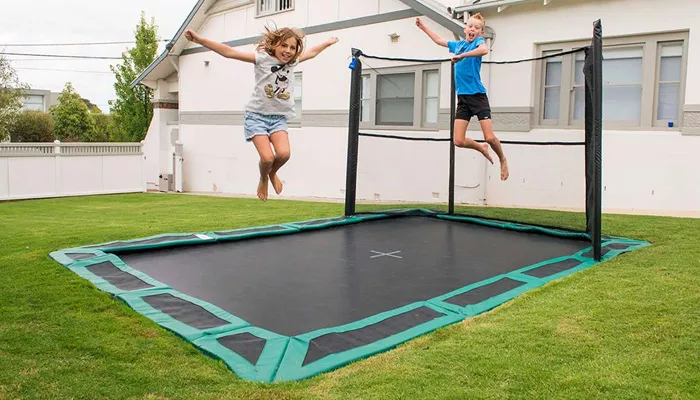Trampolines have long been a popular choice for outdoor activities, offering endless fun and physical benefits for people of all ages. Whether you’re looking to provide your kids with an exciting way to stay active or seeking a recreational outlet for the whole family, choosing the right trampoline is crucial. Here are several key factors to consider when making your selection.
Size and Space
The first step in choosing an outdoor trampoline is to assess the available space in your yard. Measure the area where you plan to set up the trampoline, taking into account not only the footprint of the trampoline itself but also the surrounding clearance. A general rule of thumb is to leave at least 5 feet of clear space around all sides of the trampoline to prevent injuries from falls.
Trampolines come in various sizes, typically ranging from 6 feet to 16 feet in diameter for round models, and there are also rectangular and square options. Smaller trampolines, like 6 – 8 feet, are ideal for younger children or limited spaces, while larger ones, such as 12 – 16 feet, can accommodate multiple users and offer a more exhilarating jumping experience. Consider who will be using the trampoline and how many people will typically jump at the same time to determine the appropriate size.
Safety Features
Safety should be your top priority when selecting a trampoline. Look for models that come with a comprehensive set of safety features. A high – quality safety net enclosure is essential. It should be made of durable, UV – resistant material and securely attached to the trampoline frame to prevent jumpers from falling off. The netting should have small enough holes to prevent fingers and toes from getting caught.
Padding is another crucial safety element. Thick, weather – resistant padding should cover the springs and frame to protect jumpers from impact. Check that the padding is well – secured and won’t easily come loose over time. Additionally, consider trampolines with features like spring – free designs, which use flexible rods or bands instead of traditional metal springs, reducing the risk of pinching injuries.
Weight Capacity
Every trampoline has a specified weight capacity, which indicates the maximum combined weight of all jumpers it can safely support. It’s important to choose a trampoline with a weight capacity that exceeds the total weight of the individuals who will be using it. Overloading a trampoline can cause structural damage and increase the risk of accidents. Make sure to read the manufacturer’s guidelines carefully and adhere to the weight limits to ensure the safety and longevity of the trampoline.
Frame and Build Quality
The durability of a trampoline depends largely on its frame and build quality. Look for trampolines constructed from high – strength, galvanized steel. Galvanization helps protect the metal from rust and corrosion, ensuring the trampoline can withstand various weather conditions over time. The frame should be sturdy and well – welded, with no visible signs of weak joints or flimsy connections.
Check the quality of other components as well, such as the mat, springs (if applicable), and legs. The jumping mat should be made of a durable, UV – resistant material that can withstand constant use and exposure to the sun. Strong, rust – resistant springs are important for providing a consistent and safe bounce. The legs should be stable and equipped with non – slip feet to prevent the trampoline from shifting during use.
Brand Reputation and Reviews
Before making a purchase, research the brand’s reputation. Look for manufacturers with a history of producing high – quality, safe trampolines. Read online reviews from other customers to get an idea of their experiences with the product. Pay attention to comments about the trampoline’s durability, ease of assembly, and customer service. A brand with positive reviews and a good reputation is more likely to offer a reliable product and provide support if any issues arise.
Budget
Trampolines come in a wide range of prices, from budget – friendly options to high – end models with advanced features. Set a budget before you start shopping, but keep in mind that investing in a higher – quality trampoline may be more cost – effective in the long run. Cheaper trampolines may lack essential safety features or be less durable, potentially leading to costly repairs or replacements down the line. Look for a trampoline that offers the best combination of safety, quality, and features within your budget.
Conclusion
In conclusion, choosing the right trampoline for outdoor activities requires careful consideration of size, safety features, weight capacity, build quality, brand reputation, and budget. By taking the time to evaluate these factors, you can ensure that you select a trampoline that provides a fun, safe, and long – lasting outdoor recreational experience for you and your family.
Related topics:

